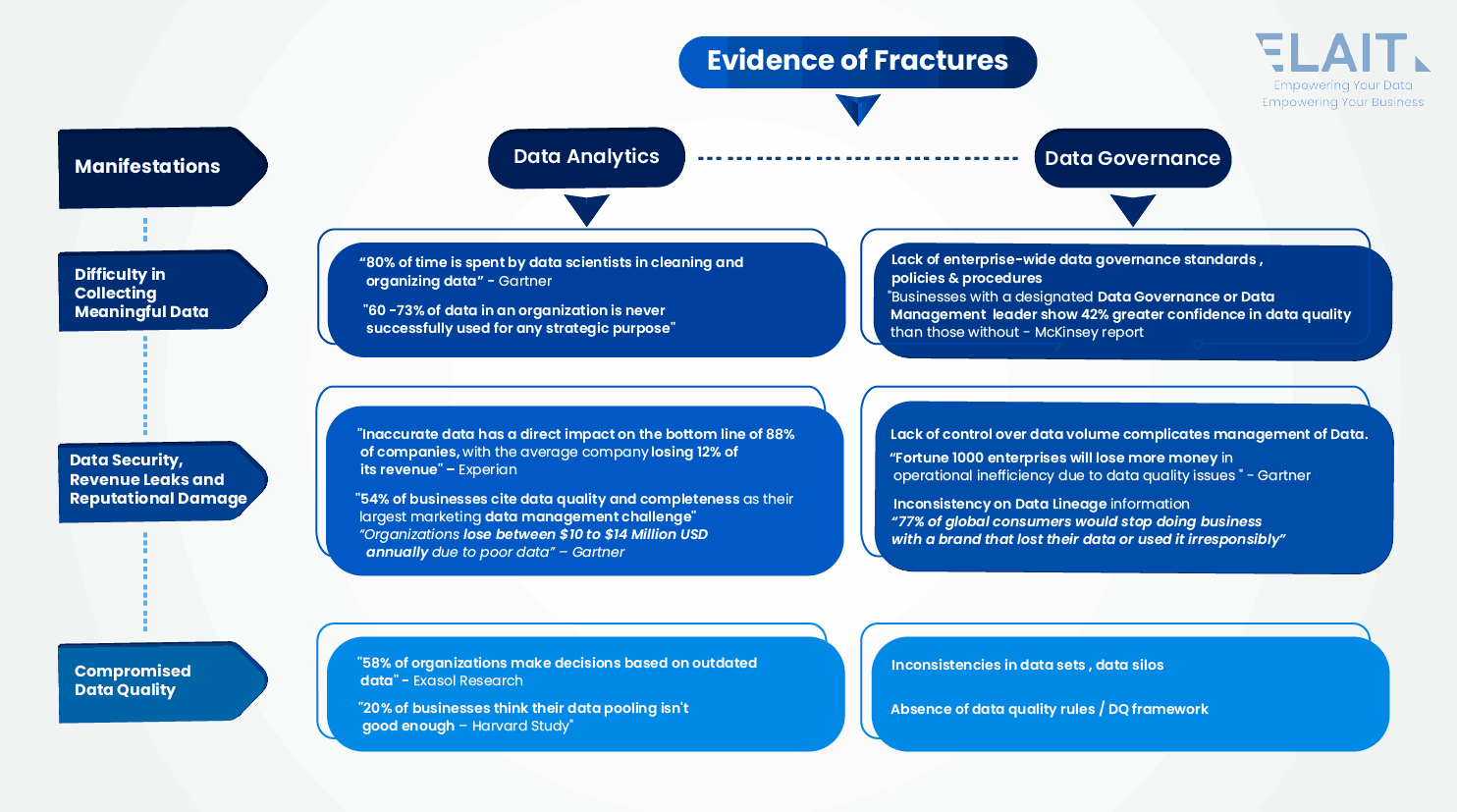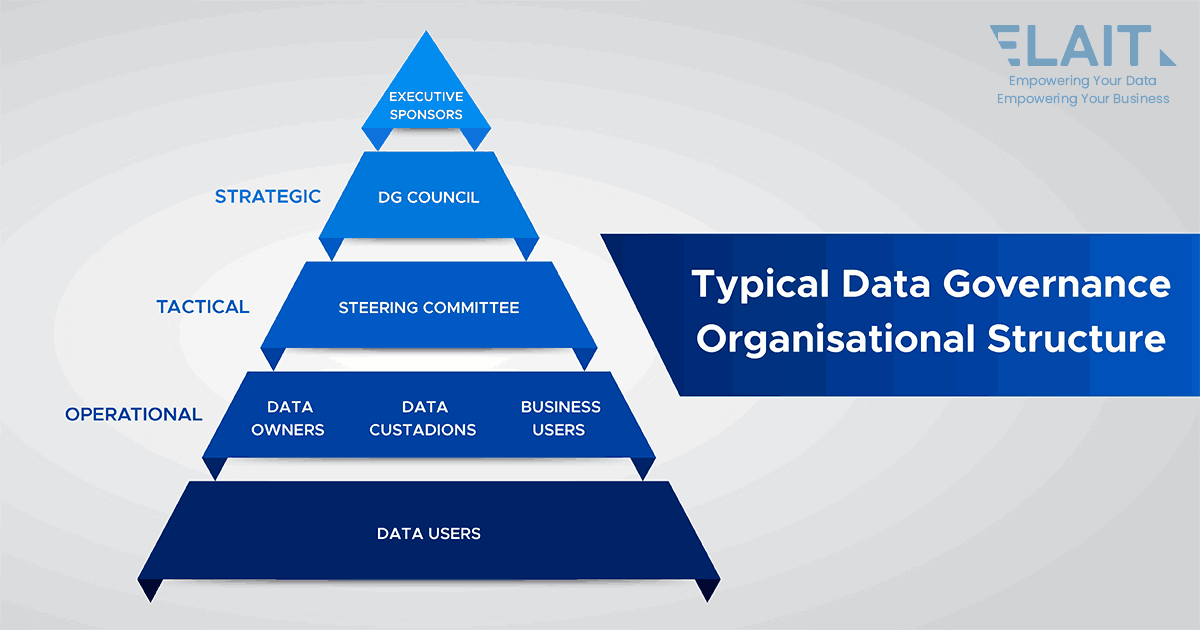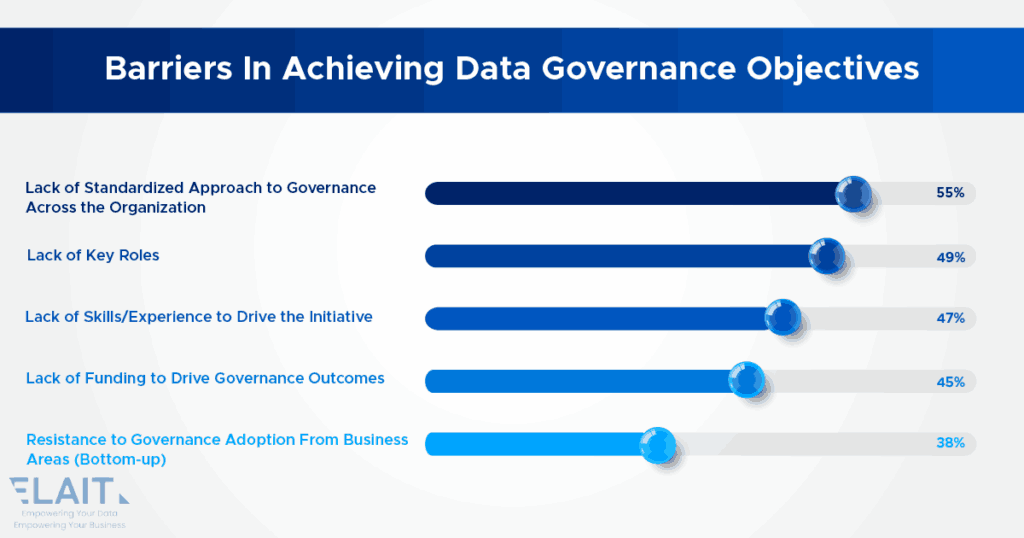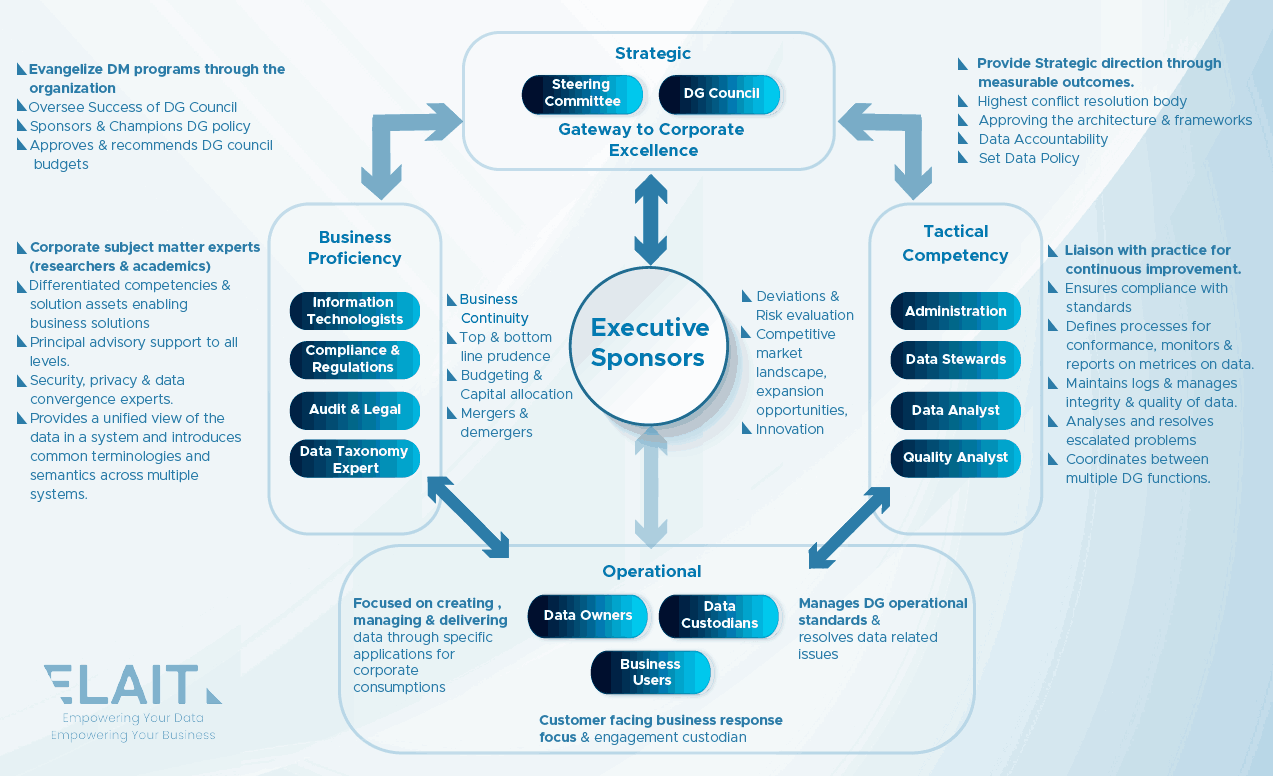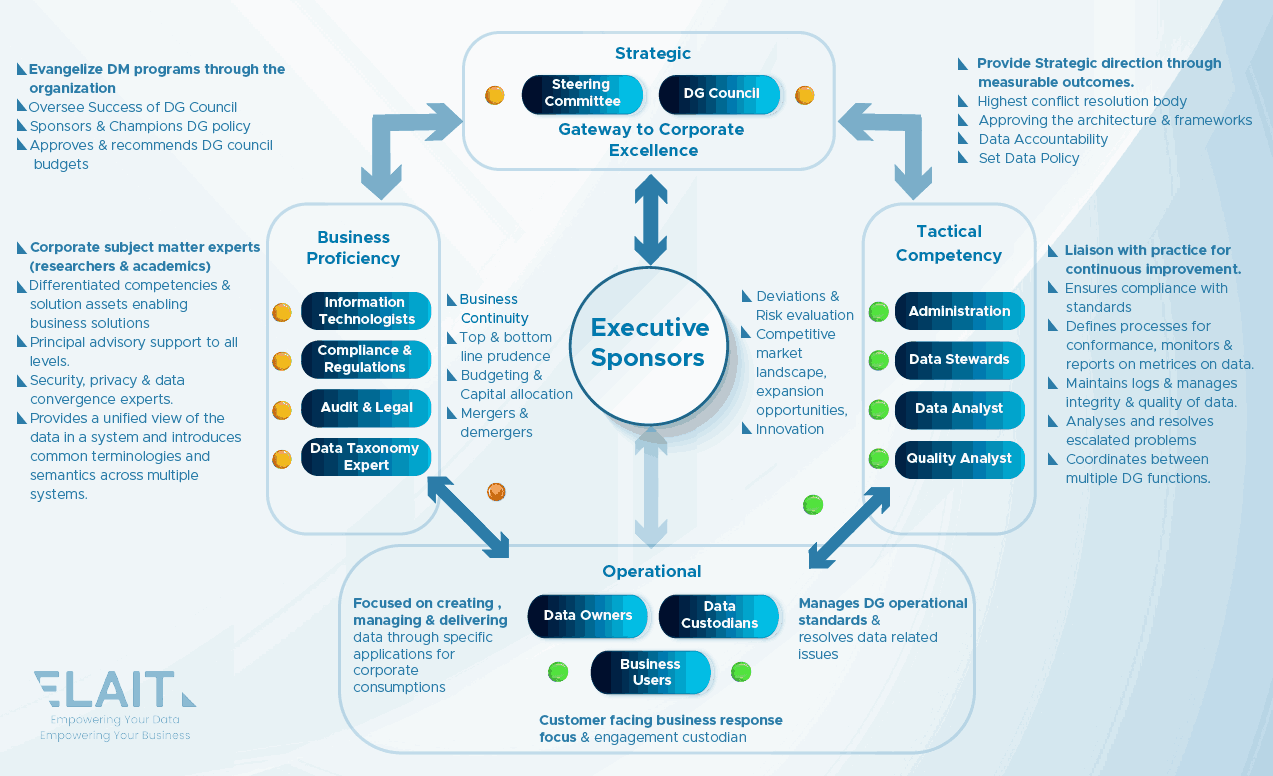New data privacy regulations and the growing reliance on data analytics to improve operational efficiency and enhance business decision-making have made data governance an essential function for any modern organisation. In an organisation setting, uncompromised data governance ensures that all data is accessible, accurate, complete, consistent, and protected.
Data Governance programs should ideally start before Data Architecture & Data Engineering implementations. Some of the key definitions that help manage data to ensure the last mile of data consumption gets data with integrity are enforced through Data Governance programs.
Detailed below are some key policies, processes and definitions that are put in place right up front –
- Setting standards for data quality — accuracy, consistency, timeliness, and completeness of data assets.
- Setting data access control policies and a program for recurrent monitoring of quality, security, and privacy checks to help reduce the risk of major disruptions exposing data. (Data security & regulatory & legal compliance procedures like PII data etc.)
- Defining data retention and data deletion/purging policies.
- Prepares data assets in auditable formats across the entire lifecycle and therefore follows data protection laws and regulations.
- Improves consistency and confidence in risk assessment and business decision-making, thereby maximizing your data assets’ ROI.
Upfront definition of all policies, processes and frameworks help to avoid retrofitting Data Engineering implementations and even choice of platforms at a later stage. Therefore, Data Governance as an afterthought leads to fractures and will not resolve data inconsistencies across an enterprise estate.
For instance, the customer credentials may be listed differently in marketing, supply chain, and customer relations systems, making it harder to integrate data, causing problems with data integrity, and seriously affecting how well business intelligence and enterprise reporting work. Additionally, data errors due to organizational silos might not be found and fixed, which would hurt the accuracy of business intelligence even more.
While data governance is a core component of an overall data management strategy, across organizations, we see multiple manifestations and evidence of fractures at the consumption stages, as illustrated in the image below.
Traditional Representation of Data Governance Organisational Structure
While program structures generally vary from organisation to organisation, a typical representation for a data governance organisational structure is pyramidal. While this is good from a presentation point of view, it does not help understand the essential flow of directives, information & feedback required across an organization.
Representative Impediments to the Goals of Data Governance
In Gartner’s study of “Barrier to Data Governance Objectives,” the top 3 most cited reasons are:
– Lack of understanding of key roles
– Lack of skills to drive data governance initiatives
– Lack of standardized approach to governance
- A leading insurance company in Europe was facing a delay in claims for bereavement settlement. In certain cases, these delays were 3-4 months up to more than a year. One of the reasons, in addition to engineering inefficiency, was that data was unavailable to the operational teams due to a lack of convergence between data in inherited antiquated and contemporary enterprise systems. Better situational and pre-arranged communication channels between the operational and business teams could have perhaps expedited the recourse for solutions.
- Business users at a prominent Indian Bank could not cross-sell to existing customers as no customer life stage data were available; the customer-facing team had no information about customers’ life stages, preferences, and products in relation to the products that were already sold to the customer in the past. Life stage data allows customer-facing teams to offer solutions based on customer preferences and provide timely and relevant services.
The above diagram is an ideal representation of the organisational data governance structure. It starts with the executive sponsor in the middle and four critical components—the Operational Team, the hands-on people consisting of data owners, data custodians and business users. Then there are the Tactical Competency Teams consisting of different competencies in terms of data analysts, quality analysts etc. Tactical and operational teams need constant interaction for improvement.
The business proficiency team consists of subject matter experts, like, information technologists, compliance, audit, legal and data taxonomy experts. The role of these teams is to provide principal advisory support at all levels in the organisation as they introduce common terminologies and semantics across multiple systems in the organisation.
Then there are the Strategic Team members comprising of the Steering Committee and the DG council. The DG council provides strategic direction through measurable outcomes, approves architecture frameworks, and sets data policy. They are responsible for giving a sense of direction to the business proficiency teams so that they can conduct research and determine the latest trends in their domain. The DG Council and business proficiency teams need to interact at the technical level & the Steering Committee will drive the adoption of any data governance program.
Fractures in Data Governance Organisational Structure
The above image represents where the data governance fractures tend to happen most.
The fractures represented by green markers depict minimal fractures occurring between the operational and the tactical competency teams, as their roles, responsibilities, compliance standards and processes are in most cases reasonably well understood though perhaps not flawlessly documented. These teams are typically “The Executioners,” ensuring compliance with standards, reporting metrics, maintaining logs, analysing the results, and escalating problems if required.
The amber markers represent the most likely occurrences of data governance fractures.
An interesting observation at the Strategic level is that when an organization has a single team to provide both strategic direction and made to evangelize the programs as well, more fractures tend to happen. The DG council members are more adept at establishing norms and guidelines rather than educating and training people and ensuring that organizational adoption happens.
The red markers represent the areas where the maximum instances of fractures happen. This type of fracture can be seen to happen between executive sponsors, the business proficiency team and the operational team. Executive Sponsors, consisting of c-suite level people like the CEO, are not primarily tasked on the implementation and adoption of data governance best practices. While they will in most cases lend a considered view on the need to maximize the strategic value of the data the corporation holds, their top objectives are driven to manage top and bottom lines, business continuity, prudent budget & capital allocation, looking at the mergers & de-mergers, risk evaluation, competitive landscape etc.
Conclusion
Modern organizations are data-driven and adopt newer technologies and platforms. As data velocity, volume and variety become more complex, newer methods of examining data emerge.
A collaborative organizational framework will ensure the scalability of the data governance practice to implement and maintain data-related strategies that will strengthen an organisation’s approach to data management more efficiently.
Although, there is no single “right” way to organise Data Governance Organisational Structure. The above-recommended structure helps identify channels for communication and bring to light what channels need to be made open and clearly represent the principal roles and responsibilities for successfully adopting data governance programs.
At Elait, our specialists in the Data Governance Office provide valuable insights and adoptable recommendation that can help organization scale their respective Data Governance programs faultlessly.
